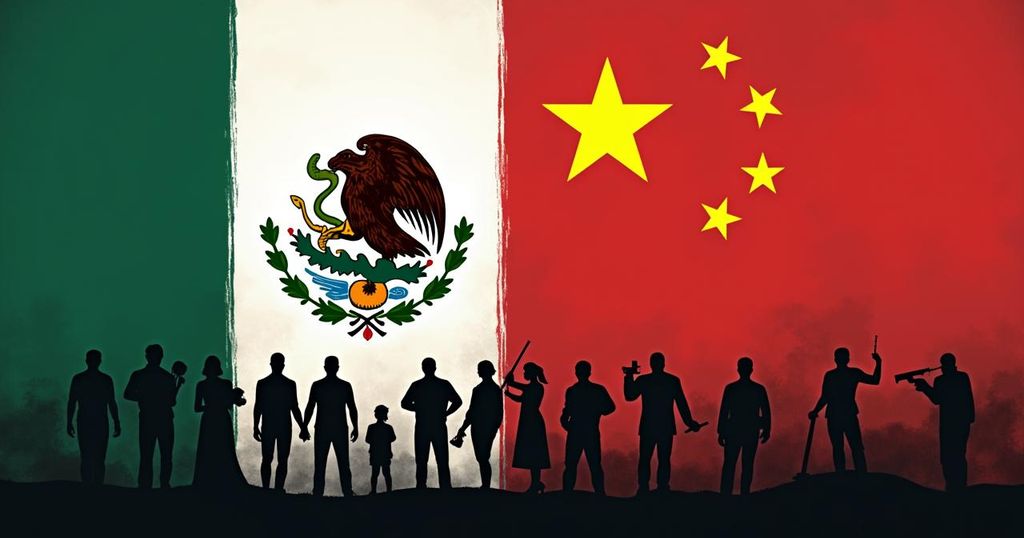Mexico Aligns with the U.S. to Enhance Domestic Manufacturing Amid Trade Tensions with China
Mexico’s Economy Secretary Marcelo Ebrard announced the country’s intention to support the United States in trade conflicts with China, emphasizing the adoption of nearshoring to enhance local production. The aim is to increase domestic content in manufacturing exports, which currently sits below 20%. Notably, Mexico has recently overtaken China as the leading supplier of goods to the U.S.
In a recent statement, Mexico’s Economy Secretary Marcelo Ebrard indicated that Mexico will support the United States in potential trade disputes with China. He underscored the importance of a unified North American economic strategy amid growing tensions between the two global powers. Ebrard articulated a plan centered around enhancing domestic production and reducing reliance on imports, highlighting Mexico’s intention to embrace nearshoring—an approach that shifts manufacturing closer to the U.S. He emphasized, “Our second most important mission is to accelerate nearshoring, to take advantage of it one thousand percent.” Ebrard pointed out that Mexico’s current domestic content in manufacturing exports is below 20% and expressed a commitment to increase this statistic through collaboration with local companies. This initiative aims not only to bolster Mexico’s market presence but also to maximize local manufacturing capabilities. Historically, Mexico’s economic relations with the U.S. were predominantly oil-based, but in recent years, manufacturing exports, such as vehicles and industrial equipment, have overtaken oil exports. Notably, 2023 marked a significant shift, as Mexico became the leading exporter of goods to the U.S., surpassing China for the first time in over twenty years.
The current geopolitical landscape has seen increasing trade tensions between the United States and China. As these tensions escalate, nations such as Mexico are evaluating their positions within the global supply chain. Mexico has recognized the opportunities presented by nearshoring, which seeks to relocate production closer to the target market—in this case, the U.S. This strategy is seen as beneficial in terms of efficiency, reducing transport costs, and mitigating risks associated with international trade disruptions. Notably, the Mexican government is now focusing on increasing local production to enhance its competitiveness in the manufacturing sector, reflecting a significant shift in its economic strategies over the decades. Additionally, this newfound manufacturing dominance suggests that Mexico is positioning itself as a key player in North America’s supply chain, tapping into existing trade agreements and fostering regional cooperation in an increasingly interdependent world economy.
In conclusion, Mexico’s decision to align with the United States in potential trade conflicts with China reflects a strategic shift towards bolstering its domestic manufacturing sector through nearshoring. Through these initiatives, the Mexican government aims to increase local content in exports and reinforce the nation’s position as a crucial player in North American trade. With 2023 marking a watershed moment as Mexico surpassed China as the primary supplier to the U.S. market, the momentum for increased manufacturing capabilities seems to be a critical focus for the nation’s economic future.
Original Source: abcnews.go.com








Post Comment